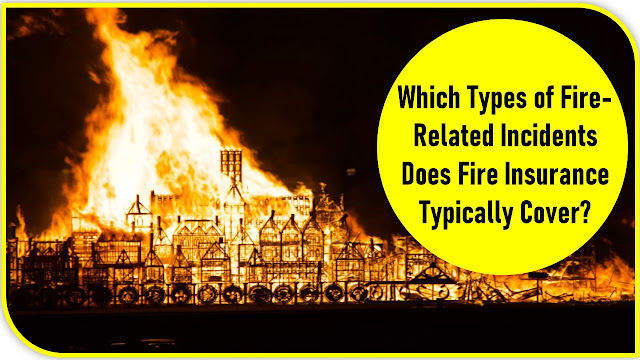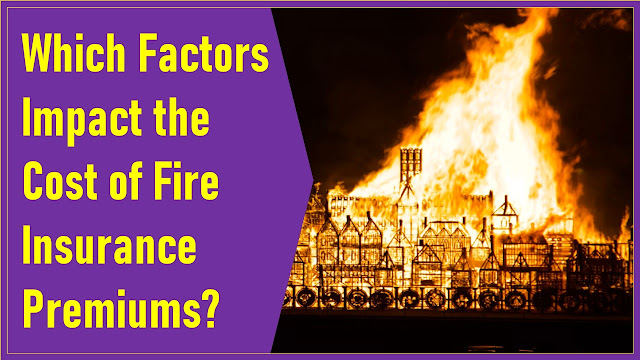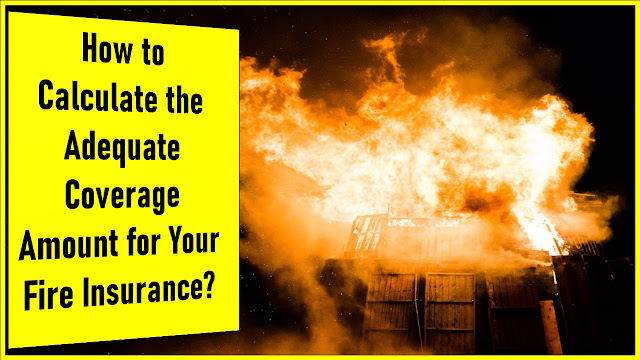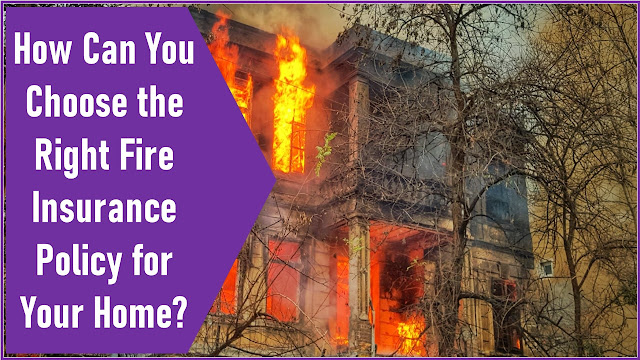Which Types of Fire-Related Incidents Does Fire Insurance Typically Cover?

Introduction.
In this article, I’ll delve into the crucial realm of fire insurance, shedding light on the types of fire-related incidents that are typically covered by this essential form of insurance. Fire insurance is a vital component of risk management for homeowners and businesses alike, offering financial protection against the devastating consequences of fires. Understanding the scope of coverage is paramount, as it can vary depending on the policy and insurance provider. By exploring the common scenarios covered by fire insurance policies, we aim to empower individuals and businesses with the knowledge needed to make informed decisions and safeguard their assets from the destructive force of fire.
From residential properties to commercial enterprises, fire insurance plays a pivotal role in mitigating the financial burdens associated with fire-related disasters. Whether you’re a homeowner seeking to protect your cherished residence or a business owner safeguarding your livelihood, this article will provide valuable insights into the types of incidents typically encompassed by fire insurance, offering you peace of mind in the face of potential fire hazards. Join us on this informative journey as we navigate the intricacies of fire insurance coverage and equip you with the knowledge necessary to ensure your assets are adequately protected.
- Common causes of fire insurance claims.
- Coverage for structural damage and property loss.
- Personal belongings protection within fire insurance.
- Additional living expenses and temporary accommodations.
- Liability coverage for fire-related incidents.
- Exclusions and limitations in fire insurance policies.
Common causes of fire insurance claims.
Fire insurance policies are designed to protect against a variety of fire-related incidents, and understanding the common causes of fire insurance claims is essential for policyholders. Firstly, accidental fires caused by electrical faults, faulty appliances, or human error often lead to claims. These incidents can occur in residential homes or commercial properties and highlight the importance of having comprehensive fire coverage.
Additionally, wildfires, though less common, are another significant cause of fire insurance claims. These natural disasters can devastate entire communities, leading to property damage and loss, necessitating coverage for repairs, replacements, and temporary accommodations. Arson, intentionally set fires, is a less frequent but critical issue. Fire insurance typically covers damages caused by arson, subject to a thorough investigation by the authorities. Understanding these common causes empowers policyholders to make informed decisions when selecting their fire insurance coverage.
Coverage for structural damage and property loss.
Fire insurance primarily offers protection against structural damage and property loss resulting from fire-related incidents. When a fire occurs, the flames, heat, and smoke can wreak havoc on buildings and their contents. Fire insurance steps in to cover the costs of repairing or rebuilding the structure, ensuring policyholders can restore their homes or businesses to their pre-fire condition.
In addition to structural damage, fire insurance also typically covers property loss. This includes the contents of the insured property, such as furniture, electronics, clothing, and other personal belongings. When these items are damaged or destroyed by fire, policyholders can file claims to recover the financial value of their losses. This aspect of fire insurance is vital in helping individuals and businesses recover from the devastating effects of a fire, as it assists in replacing essential items and easing the financial burden caused by the incident.
Personal belongings protection within fire insurance.
Fire insurance extends its coverage to personal belongings within the insured property. This means that if your furniture, electronics, clothing, jewelry, and other personal items are damaged or destroyed by a fire, you can file a claim to receive compensation for their value. This aspect of fire insurance is crucial for homeowners and renters alike, as it ensures that individuals can recover the costs of replacing their possessions in the aftermath of a fire-related incident.
It’s essential for policyholders to maintain an accurate inventory of their personal belongings and their estimated values to streamline the claims process in the event of a fire. Additionally, some high-value items, such as art, antiques, or expensive jewelry, may have coverage limits in standard policies. In such cases, policyholders should consider adding endorsements or riders to their policies to ensure adequate protection for these valuable possessions. Overall, personal belongings protection within fire insurance provides policyholders with peace of mind, knowing that their cherished items are safeguarded in the event of a fire-related catastrophe.
Additional living expenses and temporary accommodations.
When a fire damages or destroys a home or property, it often renders it uninhabitable for a period of time due to necessary repairs or rebuilding. In such cases, fire insurance typically includes coverage for additional living expenses (ALE) and temporary accommodations. This provision ensures that policyholders can maintain a reasonable standard of living while their primary residence is being restored.
ALE coverage can encompass a range of expenses, including rent for temporary housing, food costs exceeding the norm, and transportation expenses incurred due to the displacement. The goal is to minimize the disruption to the policyholder’s life by providing financial support during the period of displacement. It’s important to note that ALE coverage is usually subject to a time limit and a maximum dollar amount, so policyholders should carefully review their policies to understand the extent of this coverage.
Liability coverage for fire-related incidents.
Fire insurance policies often extend beyond property protection to include liability coverage for fire-related incidents. This aspect of coverage is essential in situations where a fire on your property spreads to a neighboring property or causes harm to others. Liability coverage can help cover legal expenses, medical bills, and other costs that may arise from such incidents.
For example, if a fire starts on your property and damages your neighbor’s home or injures someone, your liability coverage can help pay for the damages and any resulting lawsuits. It’s important to note that liability coverage isn’t limited to just fires caused by negligence; it typically includes a wide range of fire-related incidents. While the specifics of liability coverage can vary between policies and insurance providers, it serves as a crucial safety net for policyholders, protecting them from potential financial ruin in the event of fire-related legal liabilities.
Exclusions and limitations in fire insurance policies.
While fire insurance is a valuable safeguard, it’s essential for policyholders to be aware of its limitations and exclusions. Insurance policies often have specific circumstances and events that are not covered, and understanding these exclusions is crucial to avoid surprises in the event of a fire-related incident. Common exclusions can include damage from intentional acts of arson, acts of war, nuclear events, or even certain types of equipment malfunctions.
Additionally, fire insurance policies may have limitations on coverage for high-value items like jewelry, artwork, or collectibles. To address these limitations, policyholders can often purchase endorsements or riders to expand coverage for specific items or scenarios. Moreover, failing to properly maintain and protect the insured property can sometimes result in coverage denials. For example, if a property is vacant for an extended period without proper notification to the insurance company, it may lead to coverage issues. Therefore, it’s crucial for policyholders to thoroughly read and understand their policies, inquire about any ambiguities or concerns, and proactively address any potential gaps in coverage to ensure they are adequately protected in the event of a fire-related incident.
Conclusion.
I hope this exploration of fire insurance coverage has been enlightening, shedding light on the various types of fire-related incidents that these policies typically cover. Fire insurance serves as a financial safety net for homeowners and businesses, offering protection against a wide spectrum of fire hazards, from accidental blazes to the destructive force of wildfires. Understanding the breadth of coverage ensures that policyholders are well-prepared to face the uncertainties that fires can bring into their lives.
As you navigate the intricacies of fire insurance, I hope you take away the importance of thorough policy review and awareness of any exclusions or limitations. Additionally, remember that maintaining accurate records of your personal belongings and their values can facilitate a smoother claims process in times of need. With this knowledge in hand, you can confidently make choices that fortify your resilience against fire-related incidents, knowing that your insurance policy stands as a reliable safeguard for your financial well-being.







